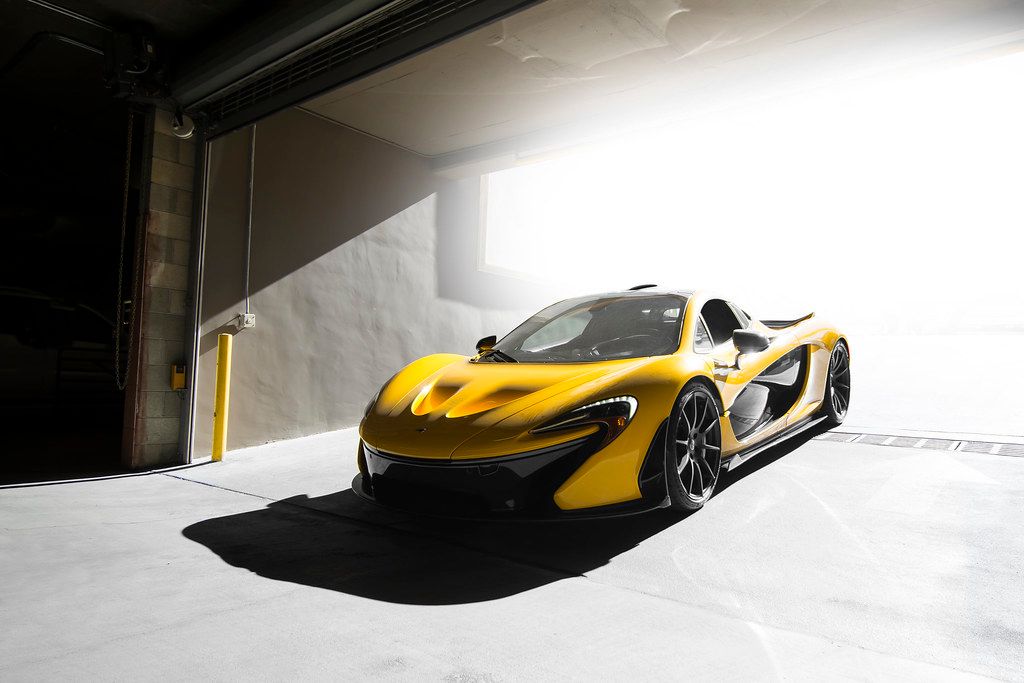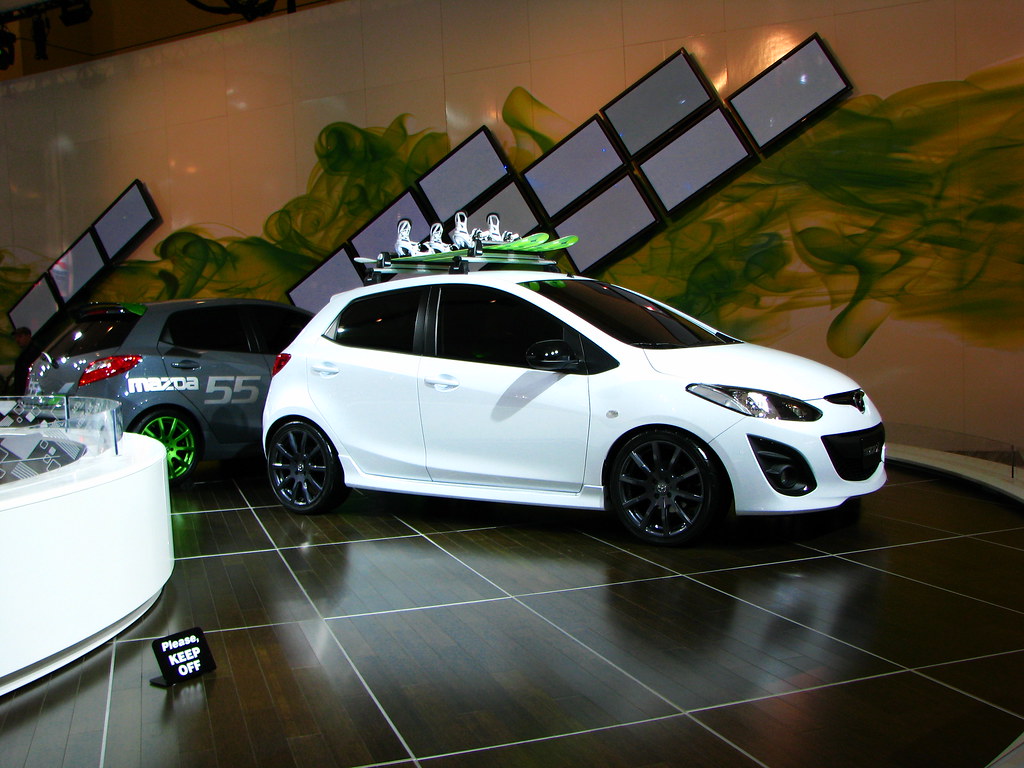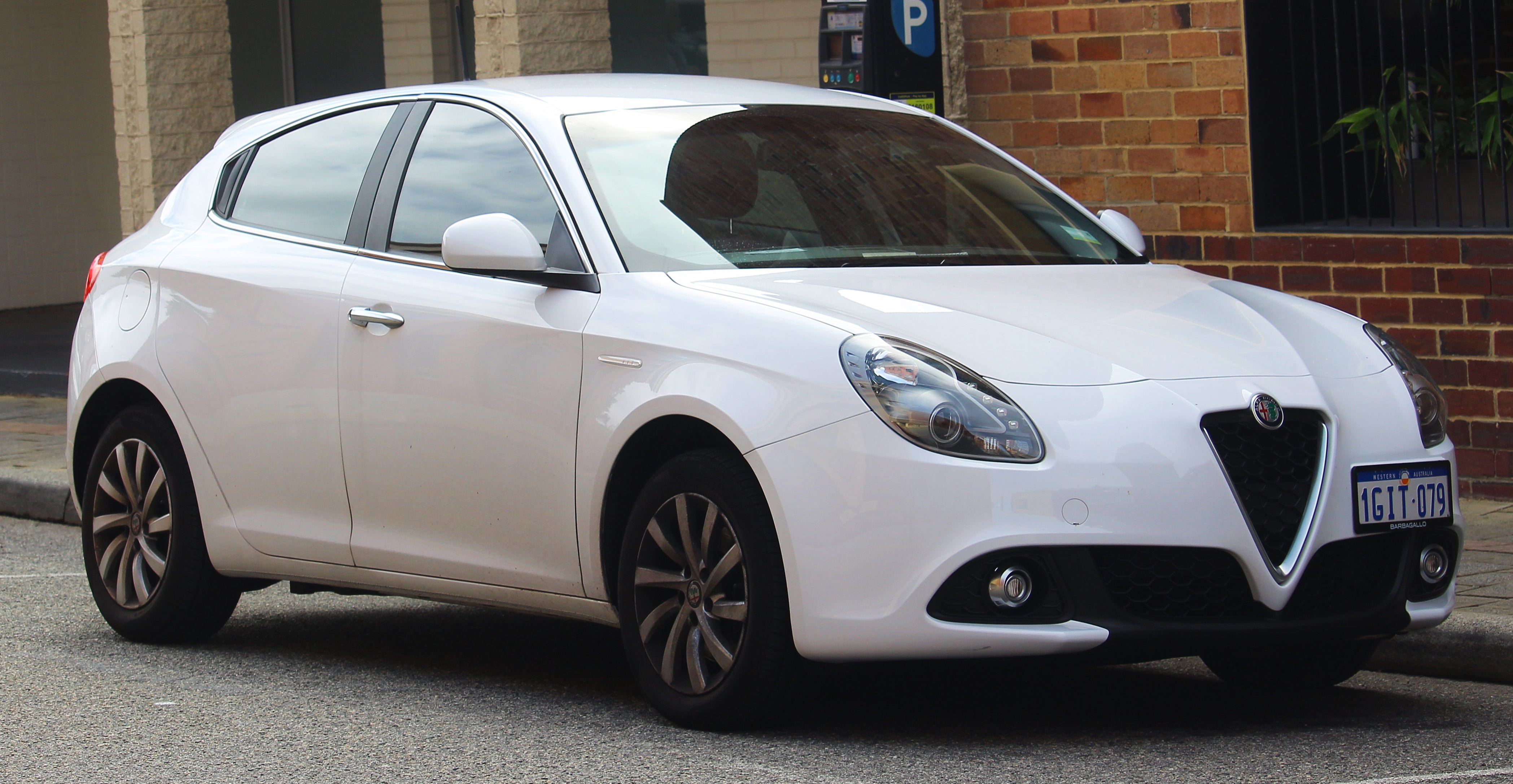
For many consumers, a used hatchback represents the perfect blend of practicality, fuel efficiency, and affordability, making it an ideal choice for daily commuting and family transport. However, the allure of a lower purchase price can quickly fade when unexpected repair bills start piling up, especially as vehicles age. Nobody wants to be stranded at the roadside, particularly with children in tow, whether it’s a cranky newborn or troublesome toddlers.
Making a wise choice in the used car market is paramount to enjoying trouble-free motoring. Conversely, choosing unwisely can lead to a frustrating cycle of roadside assistance calls and substantial garage expenses. To empower savvy shoppers, we’ve partnered with used car warranty provider Warrantywise, whose extensive database offers unique insights into which family hatchbacks transition from dependable daily drivers to what can only be described as ‘service demons’ once they mature.
Warrantywise’s comprehensive Reliability Index is calculated using a robust formula that accounts for multiple critical factors. This includes the frequency of claims made by owners over five years, the average cost of those repairs, the amount of time vehicles spend in the garage awaiting fixes, and the average age and mileage of the models under scrutiny. This data, drawn from over 750,000 customers covering cars aged between three and eight years old—the period when most original manufacturer warranties expire and hidden costs can emerge—provides an invaluable look at the real-world longevity and expense of these popular vehicles.
Our focus today is on ten popular medium-size family hatchbacks that, despite their initial appeal or widespread popularity, have demonstrated concerning reliability records as they approach and surpass the seven-year mark. These are the models where the data suggests you’re more likely to encounter significant problems and costly repairs, transforming them from smart purchases into potential financial headaches. Let’s delve into the first five contenders on our list of cars that might have you adding your mechanic to speed dial.

1. **Citroen DS4**Kicking off our list of vehicles that can prove problematic as they age is the Citroen DS4. Originally launched in the UK with a Citroen badge before evolving into the DS Automobiles DS4, this crossover hatchback initially offered a distinctive design. However, Warrantywise data places it firmly on the list of lowest-rated family hatches for reliability, signaling a potential headache for second-hand buyers.
The most telling statistic for the DS4 is that claims for repair bills are, on average, being made for cars with relatively low mileage. The average owner of a DS4 had to make a claim with just over 56,000 miles on the clock, indicating that issues can arise sooner than one might expect from a modern vehicle. This early onset of problems is a significant red flag for anyone looking for long-term dependability.
While the average claim amount for DS4 repairs is relatively modest at just £317, the frequency and timing of these claims are the main concern. Around one in seven DS4 owners with Warrantywise policies have had to seek cover for repairs within a five-year period. The most common problems reported are related to electrical faults, which, even if individually less expensive, can be notoriously difficult to diagnose and resolve, leading to frustration and repeated garage visits.
For a consumer seeking a reliable family vehicle, the prospect of electrical gremlins surfacing at a comparatively low mileage should prompt careful consideration. Despite its unique styling, the DS4’s tendency to require repairs relatively early in its lifespan makes it a challenging proposition for those on a tight budget hoping to avoid unexpected costs post-warranty expiration.
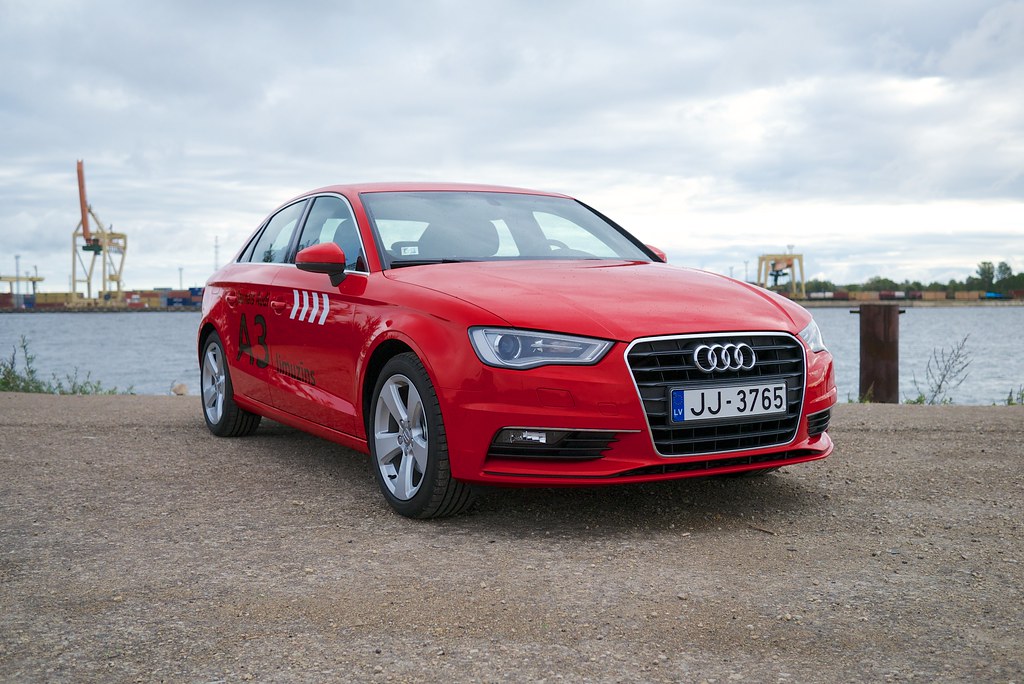
2. **Audi A3**The Audi A3 stands as one of the most popular premium-branded mid-size family hatchbacks on the market, admired for its sophisticated styling, upscale interior, and refined driving dynamics. However, Warrantywise’s reliability data paints a less flattering picture, assigning it a concerning score of below 50 percent. This indicates that beneath its premium facade, the A3 can harbor significant reliability issues as it ages.
The data reveals that while not an overwhelmingly high percentage of A3 owners used their extended warranties to cover repair costs—around 13.4 percent—those who did faced substantial bills. The average claim amount for an Audi A3 registered at a considerable £686, significantly higher than many other models on this list. This suggests that when problems do occur, they are often complex and expensive to rectify.
A key factor weighing down the A3’s reliability score is the nature of its most common serious issue: gearbox problems. Gearbox repairs are notoriously costly and time-consuming, often requiring specialized expertise and parts. The data confirms that these repairs typically take over two days, translating into prolonged periods without your vehicle and the inconvenience that entails for a family.
For buyers considering a used Audi A3, especially one nearing the seven-year mark, the risk of facing hefty gearbox-related expenses is a critical concern. While the initial purchase price might be attractive, the potential for high repair costs and lengthy garage stays could quickly erode any perceived value, making it a demanding vehicle to maintain in the long run.
Car Model Information: 2022 Audi A3 40 Premium
Name: Audi A3
Caption: Audi A3 Saloon (4th generation)
Manufacturer: Audi
Production: 1996–present
Class: Small family car
BodyStyle: hatchback
Layout: Front-engine, front-wheel-drive layout
Sp: uk
Categories: 1990s cars, 2000s cars, 2010s cars, 2020s cars, All-wheel-drive vehicles
Summary: The Audi A3 is a small family car (C-segment) manufactured and marketed by the German automaker Audi AG since September 1996.
The first two generations of the Audi A3 were based on the Volkswagen Group A platform, while the third and fourth generations use the Volkswagen Group MQB platform.
Get more information about: Audi A3
Buying a high-performing used car >>>
Brand: Audi Model: A3
Price: $25,790 Mileage: 27,987 mi.
Read more about: Jacques Charrier: French Actor, Artist, and Brigitte Bardot’s Ex-Husband, Dies at 88
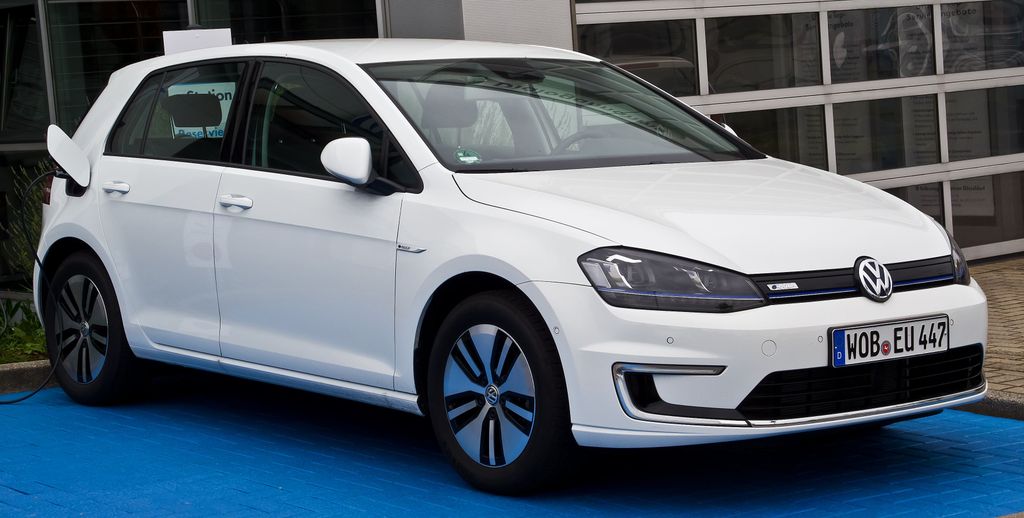
3. **VW Golf**If the Audi A3 is one of the most popular mid-size family hatches, the Volkswagen Golf is unquestionably the biggest seller of all, enjoying a reputation for quality, versatility, and broad appeal across various demographics. Yet, despite its widespread popularity and perceived robustness, Warrantywise data places the Golf firmly on the list of worst-rated family hatchbacks for reliability, presenting a stark warning for potential used car buyers.
Similar to its sister model, the Audi A3, the Golf’s reliability concerns are largely consistent with trends observed within the wider VW Group ownership. The data indicates that approximately 14.4 percent of Golf owners with extended warranties have made a claim within the last five years, highlighting a notable frequency of issues as these cars age.
The average warranty claims for the Volkswagen Golf amount to slightly more than the A3, coming in at £700. This substantial figure underscores that when faults occur, they are not merely minor inconveniences but often necessitate significant financial outlay. The most likely culprit behind these costly repairs, mirroring the A3, is gearbox issues.
Gearbox problems represent a serious and expensive challenge for any car owner. The commonality of this particular issue across such a popular model like the Golf suggests a systemic vulnerability that used buyers need to be acutely aware of. Opting for a used Golf might mean inheriting a vehicle known for potentially debilitating and expensive powertrain faults, transforming a seemingly smart purchase into a recurring burden.
Car Model Information: 2017 Volkswagen Golf SportWagen TSI SE
Name: Volkswagen Golf
Caption: Volkswagen Golf Mk8
Manufacturer: Volkswagen
Production: 1974–present
Class: Compact car
Predecessor: Volkswagen Beetle
Successor: Volkswagen ID.3
Alt: grey car (hatchback)
Categories: 1980s cars, 1990s cars, 2000s cars, 2010s cars, 2020s cars
Summary: The Volkswagen Golf () is a compact car/small family car (C-segment) produced by the German automotive manufacturer Volkswagen since 1974, marketed worldwide across eight generations, in various body configurations and under various nameplates – including as the Volkswagen Rabbit in the United States and Canada (Mk1 and Mk5), and as the Volkswagen Caribe in Mexico (Mk1).
The original Golf Mk1 was a front-engined, front-wheel drive replacement for the air-cooled, rear-engined, rear-wheel drive Volkswagen Beetle. Historically, the Golf is Volkswagen’s best-selling model and is among the world’s top three best-selling models, with more than 35 million units sold as of 2019.
Initially, most Golfs were hatchbacks, with the three-door version being somewhat more popular than the five-door. Other variants include an estate (Variant, from 1993), convertible (Cabriolet or Cabrio, from 1979), and a Golf-based saloon called the Jetta, Vento (from 1992), or Bora (from 1999). The Golf covers economy to high-performance market segments.
The Golf has won awards, including the World Car of the Year in 2009, with the Mk6 and in 2013 with the Mk7. Along with the Renault Clio and the Vauxhall Astra, the Golf is one of only three cars to have won European Car of the Year twice, in 1992 and 2013. The Golf has made the annual Car and Driver 10Best list multiple times. The Mk7 won the Motor Trend Car of the Year award in 2015, and the Mk1 GTI also won the award in 1985. The Mk4 won for the best-selling car in Europe in 2001.
Get more information about: Volkswagen Golf
Buying a high-performing used car >>>
Brand: Volkswagen Model: Golf
Price: $16,000 Mileage: 59,436 mi.
Read more about: Beyond the Sticker: Investigating 10 Cars That Truly Deliver (or Disappoint) on MPG Promises

4. **Peugeot 308**The Peugeot 308, a stylish and practical French contender in the mid-size family hatchback segment, unfortunately hasn’t rated well in reliability according to Warrantywise’s comprehensive data. Its position on this list suggests that while it may offer a comfortable ride and appealing design, its long-term dependability leaves much to be desired for used car owners, especially those beyond the initial warranty period.
The primary reason for the Peugeot 308’s low rating stems from the most common cause for owners to make warranty claims: engine problems. This is a particularly alarming finding, as engine faults are among the most serious and expensive issues a car can develop. Such fundamental mechanical failures significantly undermine a vehicle’s reliability and can lead to extensive downtime and repair bills.
While the average claim amount for a Peugeot 308 stands at a relatively low £571 compared to some premium rivals on this list, the nature of the issue—engine problems—means that even a ‘lower’ average cost for such a critical component can still be a significant financial hit. Moreover, over 15 percent of owners with Warrantywise policies have had to call on their provider to cover the cost of garage bills, indicating a widespread prevalence of these issues.
For a family relying on their hatchback for everyday transport, the prospect of frequent and serious engine problems presents a considerable risk. A used Peugeot 308, therefore, demands extreme caution. Potential buyers must weigh the attractive styling against the documented likelihood of major mechanical failures that can quickly turn an affordable purchase into a persistent financial drain.
Read more about: Unearthing Hidden Gems: 13 Forgotten Hot Hatches from the ’70s, ’80s, and ’90s That Still Go Like Hell
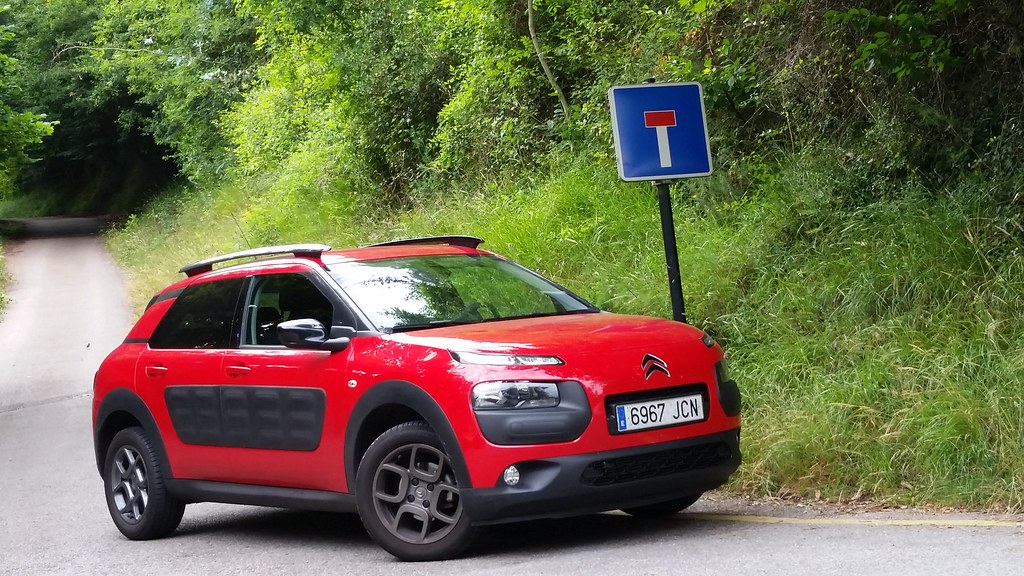
5. **Citroen C4**Rounding out the first half of our list of hatchbacks prone to becoming service demons is the Citroen C4. This model, according to Warrantywise’s data, exhibits a very similar track record to its French counterpart, the Peugeot 308, in terms of reliability challenges. While both offer distinct styling and comfortable interiors, their aging performance in the hands of owners reveals consistent patterns of costly issues.
The percentage of drivers needing to turn to their warranties for the Citroen C4 is notably high, around 15.2 percent, mirroring the 308’s frequency of claims. The average claim amount also aligns closely, at £570. This suggests a commonality in the type and cost of repairs experienced by owners of these mid-sized French family hatches, reinforcing a broader trend within certain manufacturers as vehicles age.
However, the most common specific issue for the Citroen C4 differs from the 308, focusing predominantly on problems with the air-conditioning system. While air-con issues might seem less critical than engine or gearbox faults, their frequent occurrence and the fact that claims are often made at lower mileage are significant. A malfunctioning air-con system can drastically reduce comfort and usability, especially during extreme weather, and can be surprisingly expensive to fix.
Even seemingly ‘minor’ problems like persistent air-conditioning failures, when frequent and occurring early in the car’s life, contribute substantially to a vehicle becoming a ‘service demon.’ These issues, combined with other potential underlying concerns, chip away at the car’s value and add to the overall cost of ownership. For an affordable used car, repeated, albeit less catastrophic, repairs can be just as draining on a budget as one major, isolated breakdown.
Continuing our deep dive into the used hatchback market, we now expose five more popular models that, despite their varied appeals, have demonstrated concerning patterns of costly failures as they age. This data, drawn from Warrantywise’s extensive database, highlights why these vehicles can quickly transform from attractive propositions into significant financial burdens for their owners. Understanding these common pitfalls is crucial for any savvy shopper aiming to avoid unexpected repair bills and ensure trouble-free motoring. These next five vehicles illustrate further why diligent research is essential before committing to a purchase.
Read more about: Unpacking Mopar’s Legendary V8s: What Truly Set the 383 Apart from the 340 and 440
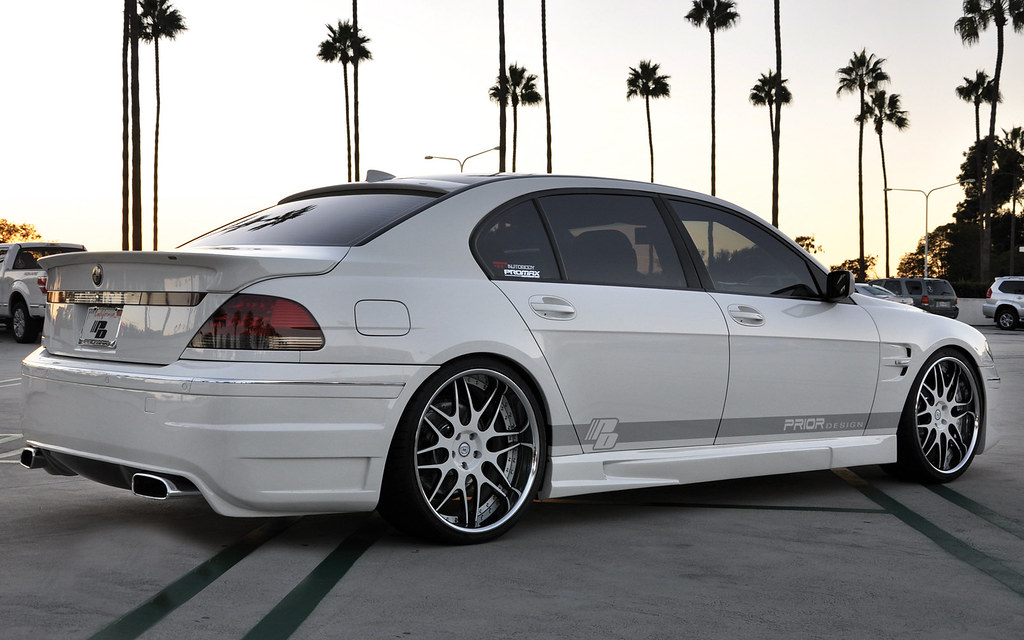
6. **BMW 1 Series**The BMW 1 Series, with its premium badge and reputation for engaging driving dynamics, often presents an attractive option in the used car market. Many buyers are drawn to its upscale interior and sporty performance, seeing it as an entry point into luxury ownership. However, Warrantywise’s data casts a shadow on its long-term reliability, particularly as it ages beyond the initial warranty period, assigning it a concerning reliability score of just 36.1 percent.
This low score is supported by a notable frequency of claims. Approximately 17.1 percent of BMW 1 Series owners with extended warranties have needed to file a claim within a five-year period. This translates to roughly one in five owners facing unexpected repair costs, a statistic that should give any budget-conscious buyer pause. The rate of claims suggests that issues are not isolated incidents but rather a more widespread characteristic of older models.
The primary concern for 1 Series owners, according to the data, revolves around engine faults. Engine problems are among the most serious and expensive issues a vehicle can develop, often requiring extensive diagnostic work and costly component replacements. The average claim amount for these repairs stands at a substantial £796, indicating that when problems do arise, they are far from minor inconveniences.
For potential buyers of a used BMW 1 Series, especially those considering models approaching or exceeding seven years of age, this information is critical. While the initial purchase price might be tempting, the documented likelihood of significant engine-related expenses, combined with other potential faults, means that ownership could quickly become financially demanding. An independent inspection by a trusted mechanic is highly recommended to mitigate these risks.
Car Model Information: 2020 Volkswagen Tiguan 2.0T SE
Name: BMW 1 Series
Caption: BMW 1 Series (F70)
Manufacturer: BMW
Production: 2004–present
Class: Luxury vehicle#Premium compact
Predecessor: BMW 3 Series Compact
Successor: BMW 2 Series
Categories: All Wikipedia articles written in British English, Articles with short description, BMW vehicle series, CS1 Spanish-language sources (es), CS1 errors: bare URL
Summary: The BMW 1 Series is a range of subcompact executive cars (C-segment) manufactured by BMW since 2004. It is the successor to the BMW 3 Series Compact and is currently in its fourth generation. Positioned as the entry-level model in BMW range of products, the first generation was produced in hatchback, coupé and convertible body styles.
Since 2014, the coupé and convertible models have been marketed separately as the 2 Series, therefore the 1 Series range no longer includes these body styles. A four-door sedan model became available for the Chinese market in 2017, using the front-wheel drive platform that is also used the basis for the third-generation 1 Series hatchback.
A high-performance BMW M version called the BMW 1 Series M Coupé was produced for the first generation. Due to the 1 Series coupé model being replaced by the 2 Series, the 1 Series M Coupé was replaced by the BMW M2 in 2016.
For the first two generations, the 1 Series used a rear-wheel drive layout, while all-wheel drive was introduced as an option since 2012. For the third generation introduced in 2019, the 1 Series switched to a front-wheel drive layout, while retaining the all-wheel drive option.
Get more information about: BMW 1 Series
Buying a high-performing used car >>>
Brand: BMW Model: 1 Series
Price: $21,000 Mileage: 37,878 mi.
Read more about: Urgent Safety Alert: Ford Recalls 133,000 Lincoln Aviator SUVs Over Detaching Trim Components

7. **Alfa Romeo Giulietta**The Alfa Romeo Giulietta, known for its distinctive Italian styling and engaging driving experience, has recently been phased out of the new car market after a decade-long run. Its unique aesthetic and sporty character make it a desirable option for those seeking something different from the mainstream. Yet, beneath its stylish exterior, the Giulietta struggles with long-term dependability, earning a low reliability score of 26.1 percent from Warrantywise.
The data reveals that 17.9 percent of Giulietta owners with extended warranties have made a claim within the last five years, indicating a consistent pattern of issues. When these problems occur, they often result in significant financial outlay. The average cost to rectify these faults is a considerable £888, highlighting that repairs are neither cheap nor simple to perform.
A pervasive problem reported by Giulietta owners is electrical gripes. These electrical issues are notorious for being difficult to diagnose and can lead to a variety of frustrating malfunctions, impacting everything from infotainment systems to critical vehicle functions. The data also notes that affected vehicles are typically off the road for up to 3.5 days, a considerable inconvenience for any driver relying on their car for daily transport.
For consumers captivated by the Giulietta’s charm, it is essential to be aware of these potential reliability challenges. The combination of frequent electrical faults, high average repair costs, and extended garage times means that owning an older Giulietta could be a test of patience and financial resilience. Prioritizing a thorough pre-purchase inspection that specifically checks all electronic systems is a wise strategy.
Car Model Information: 2020 Volkswagen Tiguan 2.0T SE
Name: Alfa Romeo Giulietta
Manufacturer: Alfa Romeo
ModelCode: 940
Production: 2010 – December 2020 (469,067 produced)
Assembly: Piedimonte San Germano,Lazio
Predecessor: Alfa Romeo 147
Successor: Alfa Romeo Tonale
Class: Small family car
BodyStyle: hatchback
Layout: Front-engine, front-wheel-drive layout
Platform: Fiat Compact platform
Engine: Fiat,Fully Integrated Robotised Engine#List of FIRE engines,Straight-4,Turbocharger,Petrol engine
Transmission: FPT Industrial,Dual clutch transmission,FPT C635 DDCT transmission
Wheelbase: 2634 mm
Abbr: on
Length: 4351 mm
Width: 1798 mm
Height: 1465 mm
Weight: convert
Related: Dodge Dart (2013),Jeep Cherokee (KL),Chrysler 200
Designer: Lorenzo Ramaciotti
Categories: Alfa Romeo vehicles, All Wikipedia articles in need of updating, All Wikipedia articles written in British English, All articles with dead external links, All articles with unsourced statements
Summary: The Alfa Romeo Giulietta (Type 940) is a hatchback manufactured and marketed by Alfa Romeo, as a 5-door small family car with sporting ambitions. Production started near the end of 2009 and the model was introduced at the March 2010 Geneva Motor Show. The Giulietta placed second in the 2011 European Car of the Year awards. In 2020, Alfa Romeo announced that they were going to axe the Giulietta and production ended on 22 December 2020 spanning 10 years of sales from a period of 2010 to 2020. In total 469,067 examples were produced until 2020.
Get more information about: Alfa Romeo Giulietta (2010)
Buying a high-performing used car >>>
Brand: Alfa Romeo Model: Giulietta
Price: $21,000 Mileage: 37,878 mi.
Read more about: Dealer’s Nightmare: The 8 Cars Nobody Will Buy Even with Massive Discounts
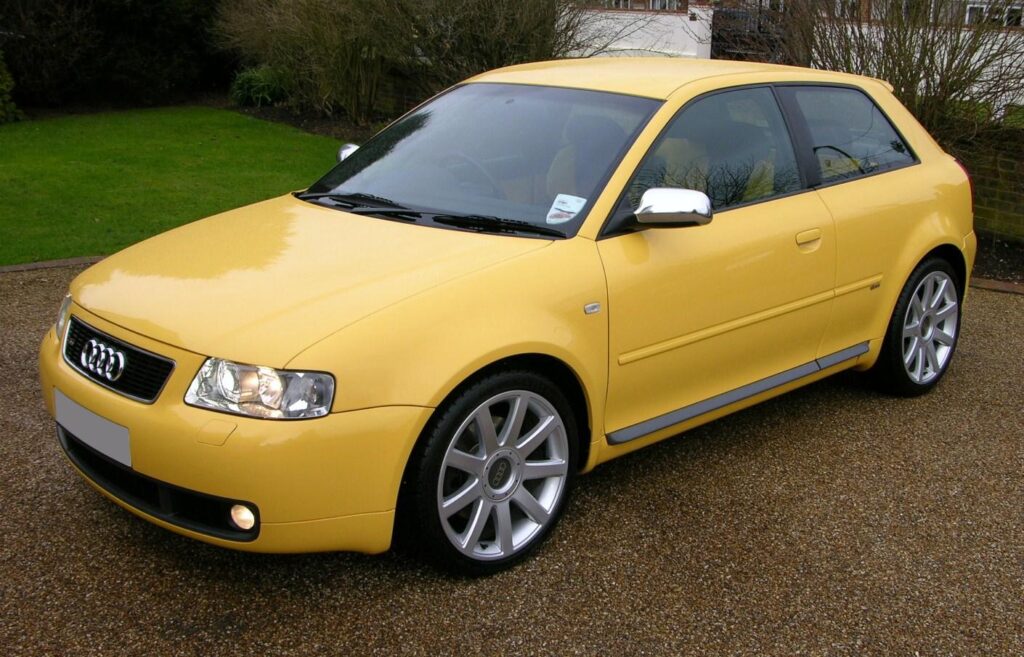
8. **Audi S3**The Audi S3 represents the performance-oriented variant of the A3, combining the practicality of a family hatchback with a significant boost in power and speed. This “hot hatch” appeals to drivers who desire both exhilarating performance and everyday usability. However, as with its A3 sibling, the S3’s reliability record takes a sharp turn for the worse as it ages, placing it among the least dependable models with a score of 19.9 percent.
The S3’s position in this list is largely due to the high frequency and cost of its repairs. A substantial 21.9 percent of S3 owners with extended warranties have made a claim in the last five years, meaning more than one in five owners have faced significant repair bills. This high claim rate signals that performance comes with a notable risk of mechanical issues in older models.
The primary culprit behind these claims is engine problems, which are particularly concerning in high-performance vehicles where components are often under greater stress. While engine faults are the biggest cause of concern, the data indicates that they are just one of several various issues that prompt owners to seek warranty coverage. The average claim amount for an Audi S3 is a hefty £1,046, reflecting the complex and expensive nature of repairs for these sophisticated powerplants.
Prospective buyers of a used Audi S3 must carefully weigh the allure of its performance against the documented likelihood of costly engine issues and other significant repairs. The financial implications of maintaining an aging performance vehicle like the S3 can quickly erode any perceived value from its purchase price. Detailed service records and a comprehensive pre-purchase inspection are absolutely essential.
Car Model Information: 2016 Audi S3 2.0T Premium Plus
Name: Audi S3
Manufacturer: Audi
Production: 1999—present
Assembly: Ingolstadt,Germany
Class: Luxury car#Premium compact
BodyStyle: hatchback
Layout: transverse engine,front-engine design
Transmission: manual transmission
Related: Audi A3
Sp: uk
Categories: 1990s cars, 2000s cars, All articles needing additional references, Articles needing additional references from January 2008, Articles with short description
Summary: The Audi S3 is a performance version of the Audi A3 small family car, produced by German automaker Audi since 1999. S3 variants of have been produced from the first generation through the fourth generation of Audi A3.
Like all Audi S models, it is only available with quattro four-wheel drive system.
Get more information about: Audi S3
Buying a high-performing used car >>>
Brand: Audi Model: S3
Price: $18,995 Mileage: 88,799 mi.
Read more about: 15 Trans Actors Leading Non-Trans Storylines in the Last 5 Years
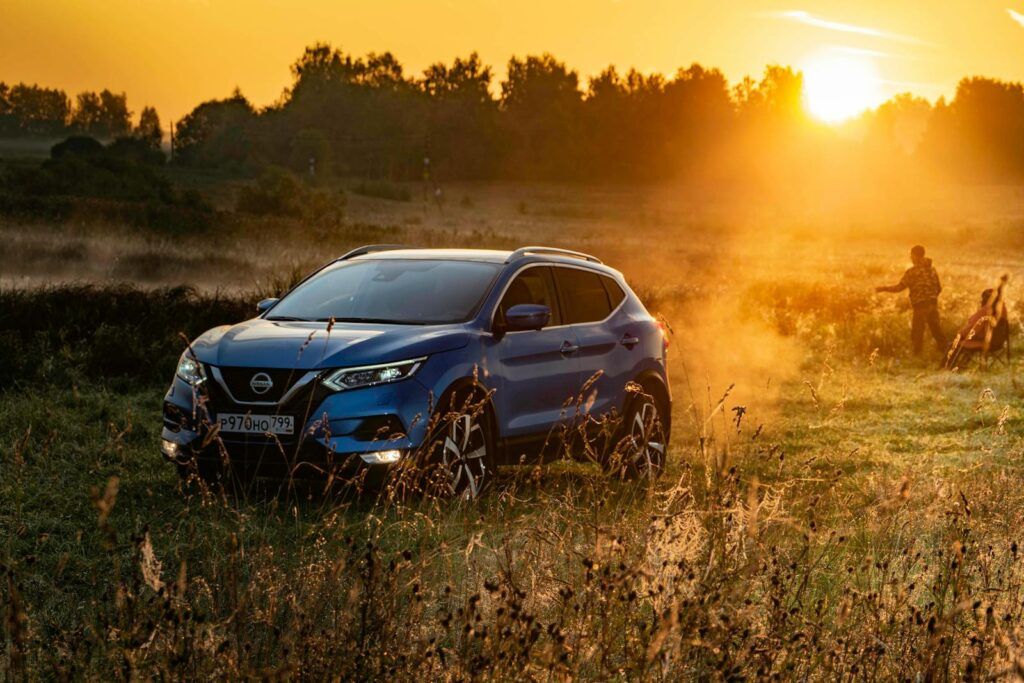
9. **Seat Leon Cupra**Much like the Audi S3, the Seat Leon Cupra is a formidable “hot hatch” designed to deliver potent performance alongside practical family transport. It caters to those who enjoy a spirited drive but still need a versatile vehicle for daily duties. Yet, for all its dynamic appeal, the Leon Cupra registers a very low reliability score of 18.7 percent according to Warrantywise, indicating significant long-term reliability challenges.
The data highlights that nearly one in five (18.6 percent) of Leon Cupra owners with extended warranties have had to make a claim within the past five years. This frequency underscores a concerning pattern of issues that owners encounter as these vehicles mature. The average claim amount for a Cupra is a substantial £1,265, suggesting that when problems arise, they are often severe and require significant financial investment to resolve.
The most common complaints from Leon Cupra owners center on electrical gremlins. Unlike minor electrical glitches, these are described as “fairly severe problems,” indicating issues that can significantly impact the vehicle’s functionality and safety. Such complex electrical faults often require specialized diagnostic tools and expertise, contributing to both the high cost of repairs and the potential for extended garage stays.
For individuals considering a used Seat Leon Cupra, it is imperative to acknowledge the documented risks associated with its long-term reliability. The combination of high repair costs and frequent, severe electrical issues can quickly turn an exciting purchase into a source of considerable financial stress. Due diligence, including a detailed pre-purchase inspection with a focus on electronic systems, is highly advisable.
Car Model Information: 2020 Volkswagen Tiguan 2.0T SE
Name: SEAT León
Aka: Cupra (marque)
Caption: SEAT León Mk4
Manufacturer: SEAT
Production: October 1999 – present
Class: Compact car
BodyStyle: ubl
Layout: Front-engine, front-wheel-drive
Sp: uk
Categories: 2000s cars, 2010s cars, 2020s cars, All Wikipedia articles written in British English, All articles with dead external links
Summary: The SEAT León (Spanish pronunciation: [ˈse.at leˈon]), also spelled Leon in some other languages (named after the city of León, which also means “Lion” in Spanish), is a small family car built by the Spanish car manufacturer SEAT since October 1999.
The first two León generations used two differing variants of the Volkswagen Group A platform, and shared many components with other Volkswagen Group cars. The third and fourth generation use the Volkswagen Group MQB platform, also used by the Audi A3 Mk3 and Mk4, Volkswagen Golf Mk7 and Mk8 and Škoda Octavia Mk3 and Mk4.
Get more information about: SEAT León
Buying a high-performing used car >>>
Brand: Seat Model: Leon Cupra
Price: $21,000 Mileage: 37,878 mi.
Read more about: Discover 15 Underappreciated Sports Cars That Are Hidden Gems

10. **Mercedes-Benz A45 AMG**Taking the unfortunate top spot in our list of ‘service demons’ is the Mercedes-Benz A45 AMG, an outrageously powerful hot hatchback that, at its launch, featured the world’s most powerful turbocharged four-cylinder engine in series production. Its blend of luxury, blistering performance, and compact size makes it a truly captivating machine. However, this extreme engineering comes at a steep price in terms of long-term reliability, as evidenced by its lowest score of 17.5 percent from Warrantywise.
Despite its premium status, the A45 AMG demonstrates a concerning trend of costly failures. While the percentage of owners making claims (15.2 percent) is not the highest on this list, the financial impact of these claims is staggering. The average value of claims for the A45 AMG stands at nearly £1,400, making it the most expensive model to repair on our entire list. This figure alone should be a significant deterrent for budget-minded used car shoppers.
The data specifically identifies the turbocharger as the most frequent reason for owners to turn to their extended warranties. Given that the A45 AMG’s performance is intrinsically linked to its advanced turbocharged 2.0-liter engine, issues with this critical component are both predictable and profoundly expensive. A failing turbocharger can lead to a significant loss of power, reduced fuel efficiency, and eventually, catastrophic engine damage if not addressed promptly.
For anyone considering a used Mercedes-Benz A45 AMG, it is crucial to understand that while its performance is exhilarating, its potential for becoming a ‘service demon’ is unparalleled among its peers. The combination of complex high-performance engineering, high repair frequency for critical components like the turbocharger, and sky-high average repair costs means that ownership of an older model can be an incredibly expensive endeavor. This vehicle underscores the principle that thrilling performance in a used car can often translate directly into formidable maintenance expenses.
Car Model Information: 2020 Volkswagen Tiguan 2.0T SE
Name: Mercedes-AMG GmbH
Logo: File:AMG logo.svg
Type: Subsidiary
Fate: DaimlerChrysler
Foundation: Burgstetten
Founders: Hans Werner Aufrecht,Erhard Melcher
LocationCity: Affalterbach
LocationCountry: Germany
AreaServed: Worldwide
KeyPeople: Philipp Schiemer (Chairman of the Board)
Industry: Automotive industry
Products: High performance automobiles
Services: Research and development
NumEmployees: ~2,900
Parent: Mercedes-Benz
Homepage: www.mercedes-amg.com
Categories: 1967 establishments in West Germany, 24 Hours of Le Mans teams, ADAC GT Masters teams, All articles with dead external links, All articles with vague or ambiguous time
Summary: Mercedes-AMG GmbH, commonly known as AMG (Aufrecht, Melcher, Großaspach), is the high-performance subsidiary of Mercedes-Benz AG. AMG independently hires engineers and contracts with manufacturers to customize Mercedes-Benz AMG vehicles. The company has its headquarters in Affalterbach, Baden-Württemberg, Germany.
AMG was originally an independent engineering firm specializing in performance improvements for Mercedes-Benz vehicles. DaimlerChrysler AG took a controlling interest in 1999, then became the sole owner of AMG in 2005. Mercedes-AMG GmbH is now a wholly owned subsidiary of Mercedes-Benz AG, which is in turn owned by the Mercedes-Benz Group.
AMG models typically have more aggressive looks, higher performance, better handling, better stability and more carbon fibre than their regular Mercedes-Benz counterparts. AMG models are typically the most expensive and highest-performing variant of each Mercedes-Benz class. AMG has also made special variants of some Mitsubishi and Honda models.
AMG variants are usually badged with two numerals, as opposed to regular Mercedes-Benz vehicles, which have three (e.g. “E 63” as opposed to “E 350”). The numerals do not always indicate engine size, but are rather a tribute to earlier heritage cars, such as the 300 SEL 6.3 litre. For example, newer-model AMG V8s such as the E 63 actually have 4.0L V8s.
The world’s first stand-alone Mercedes-AMG dealership, AMG Sydney, was opened in Sydney, Australia in 2018.
Get more information about: Mercedes-AMG
Buying a high-performing used car >>>
Brand: Mercedes-Benz Model: A45 AMG
Price: $21,000 Mileage: 37,878 mi.
Read more about: Navigating Safety: 13 Top SUVs Featuring Advanced Collision Avoidance Systems for Family Peace of Mind
Our journey through these ten popular mid-size family hatchbacks serves as a vital reminder for all used car shoppers: an initial low purchase price does not always equate to long-term affordability. While these vehicles may initially seem like smart choices, the detailed data from Warrantywise unequivocally shows that certain models can become financial drains once they hit the seven-year mark, demanding significant attention and repair costs. From gearbox failures and engine problems to persistent electrical gremlins and costly turbocharger issues, the common threads of unreliability and expense highlight the importance of informed decision-making. Always prioritize independent inspections, thorough service history checks, and consider the real-world implications of potential repair bills to ensure your next used car truly offers trouble-free motoring for years to come.

